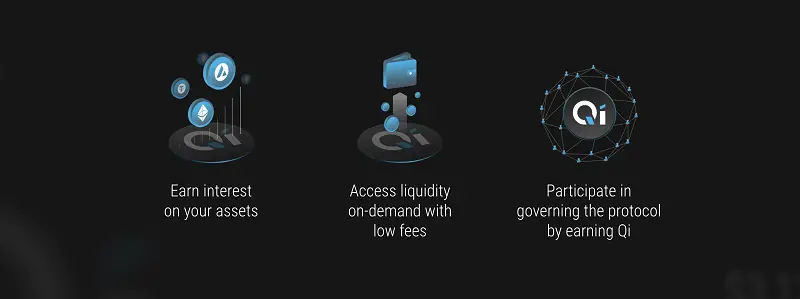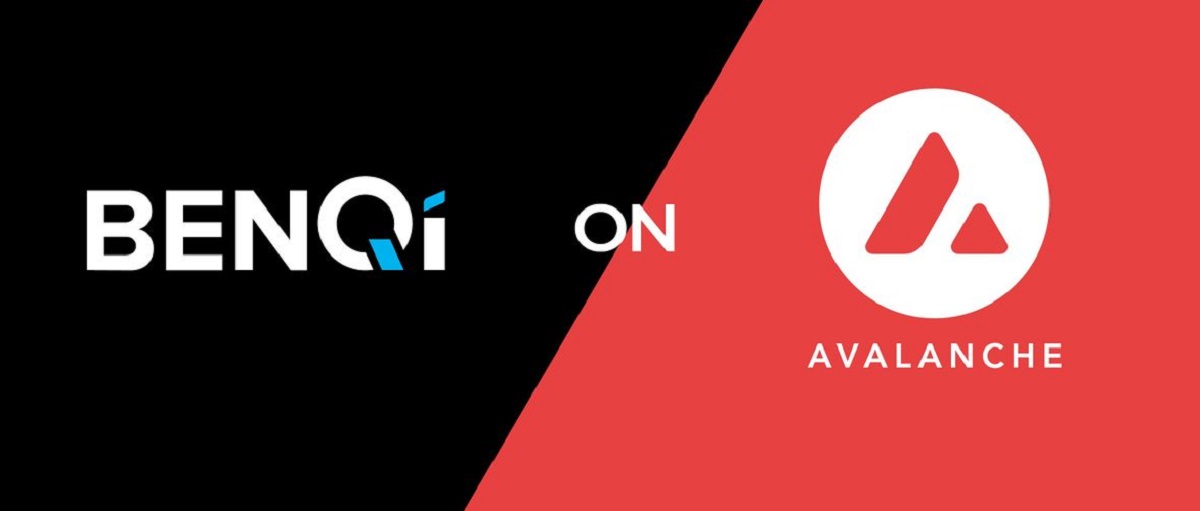BENQI is a decentralized liquidity market protocol that is traded on the Avalanche blockchain. Liquid staking, lending and borrowing opportunities are offered within the protocol, allowing users to perform these transactions with different tokens. You can staking, borrow & lend tokens, participate in network management within the BENQI platform. The biggest of BENQI’s long-term goals is to establish an easy link between traditional banking and DeFi products. That’s why the DeFi market has developed software, despite network congestion and high transaction fees, which are the two major problems of the DeFi market. What is BENQI (QI) token, we will examine it in full detail in the article.
Avalanche is a highly scalable blockchain. Thanks to proprietary smart contract protocols, users on the BENQI platform can stabilize interest rates by liquidity mining and staking, in return they earn passive income. QI can be staked into the protocol’s security module to secure the BENQI protocol. Thus staked QIs will be used as collateral and QI rewards will be earned with a certain APR. It can be rewarded with platform tokens by participating in liquidity pools with the QI token. As QI is a token traded on both the AVAX C-Chain and Binance Smart Chain, it can be put into liquidity pools on the Pangolin dex on the Avalanche network, as well as on PancakeSwap and similar dexes on BSC.

QI token is the governance token of the BENQI platform. QI token holders can have a say in the platform by participating in the management of the protocol. By having voting rights as much as the amount of QI held, you can vote for possible updates on the platform, and new ideas can be presented. To vote on BENQI Improvement Proposals (BIP), you must have a QI token. You should also have QI tokens for things that are really important to the platform, such as suggesting a new development and launching an offer.
QI token distribution
Liquidity Mining Program: 45%
Token Sale: 25%
Treasury: 15%
Team: 10%
Exchange Liquidity: 5%
Most of the QI tokens are planned to be distributed through liquidity mining. It takes 260 weeks for all of the 7,200,000,000 QI tokens to be in circulation. Accordingly, the protocol will automatically calculate according to the number of users and the amount of liquidity, and the QI reward amount will be determined instantly.
Borrowing & lending with BENQI
Users can choose to lend, borrow money and earn interest with their cryptocurrencies through various methods and protocols. For this, many platforms, both centralized and decentralized, have been created. BENQI has united lenders providing liquidity for the same platform and borrowers using their assets as collateral. It is also possible to stake AVAX coins on the platform as the platform transacts on the Avalanche C-Chain blockchain. Lending and staking allow crypto investors to earn passive income from the cryptocurrencies they hold.
At BENQI, borrowers can do this with overcollateral. Funds are managed through smart contracts on the platform. The collateral for borrowing is calculated from the current USD value by signing the smart contract.
BENQI is the first borrowing and lending protocol of the Avalanche blockchain. Avalanche network has dApps with high number of users and transaction volumes such as Trader Joe, Pangolin Exchange, Aave, Lydia Finance, but none of them provide the services that BENQI provides. According to the BENQI roadmap, new DeFi product will be developed in the first quarter of 2022, partnerships will be established with additional protocols, improvements will be made in liquid staking and the security module will be strengthened. By the middle of 2022, the design architecture of the subnets will be completed.

BENQI partnerships and investor firms
BENQI is trying to make various partnerships to expand the use of the platform and the QI token and to reach more users. BENQI, which has made a name for itself with Binance Launchpool, continues to make new deals. Already, Binance, KuCoin and Gate.io listings have greatly increased the awareness and value of the token.
Token Terminal will perform real-time data analysis of the BENQI protocol. Rome Terminal will migrate BENQI’s lending and borrowing operations to multi-chain token analytics. Thus, these transactions will not be limited to the Avalanche network only.
Halborn is the firm that oversees BENQI’s smart contracts so far. From now on, all smart contracts to be signed in the protocol will continue to be audited by Halborn. For the price feeds of the BENQI protocol, an integration with Chainlink, an orachle solution, has been made. BENQI received two rounds of DeFi Growth incentives from Avalanche. Bug Bounty program was started with Immunefi to protect the security of the protocol. Thus, users who find errors or vulnerabilities on the protocol will be rewarded.
BENQI, which has raised millions of dollars from Venture Capital, including Genblock Capital, STL Digital Asset Strategies, Morningstar, Woodstock, continues to attract the attention of many companies.
Conclusion
For the DeFi market to increase mass adoption and continue to gain strength over traditional finance, various blockchains must be able to be interconnected and each blockchain must have DAO platforms like BENQI. BENQI will automatically become fully community managed as its usage increases. Launched on August 19, 2021, the QI token not only managed to increase its value several times in a short time, but also became the dApp with the highest total locked value on Avalanche.





